Presidents on Parade
There have been fourteen Presidents of the Association since it was founded, as the Freemen of England, in 1966, and this page will give you a short biography on each one.
Sadly, six out of the thirteen are deceased so their obituaries, where applicable, as they appeared in the Newsletter/Journal, have been reproduced here instead.
Some pictures are captioned, just hold your mouse over them to read.
Harry Ward, Founder President, in office 1966 to 1981 (deceased)
Please see separate page for full details of our Founder President.
Col John F Kenyon OBE MC, (1921 ~ 2006), in office 1981 to 1990 (deceased)
These articles appeared in Journal 147, Hillary 2007
The view of a personal colleague and friend
I have known Colonel John since the early eighties – over twenty years. When we first met, I did not know what to expect of this ex-army Colonel, who was President of the Freemen of England. He had a formidable reputation for getting things done, for being less than patient with fools, and yet endearing himself to his team.
I discovered a charming and urbane gentleman, who had the knack of being able to see through the outward appearance right to the inner core. As are many army officers, he could judge colleagues and acquaintances alike with accuracy but with a benevolence unusual.
It was Colonel John who invited the first Court Leet of Freemen Burgesses – the Altrincham Court Leet – to join the Freemen of England as full members, because he recognised a similarity of purpose and an affinity of goals. He was also convinced, as was his great friend Charles Sparrow, the Association’s Honorary Counsellor, of the strength which comes of unity and a larger membership.
Colonel John followed our Founder President, Harry Ward, and added to the lustre and growing reputation of what is now known as the Freemen of England and Wales and is recognised by both Central and Local Government. It was Colonel John who was the motivating force in the Association’s fight for the preservation of the York Strays, taking the legal battle through the Courts, the House of Commons and eventually the House of Lords. The judgement in favour of the Freemen of England and the Gild of Freemen of the City of York prevented the York City Council from the compulsory purchase of the Gild’s lands and, perhaps, just as important, dashed the acquisitive aspirations of other avaricious councils who cast envious eyes upon Freemen’s property.
Without John Kenyon, both as President and Past President, FEW would have been toothless and without a soul; it would have lacked an approachable and benevolent leader and father-figure. As with so many others, I shall miss him and his counsel deeply. I count myself not only fortunate but also immensely honoured to have been able to call him my friend.
Richard Bishop, Past President
and
From the Daily Telegraph
Colonel John Kenyon, who has died aged 84, won an immediate MC as a mountain gunner in the Burma campaign during the critical battle of Kohima; some 35 years later he waged a successful campaign to restore his county council’s name to Shropshire instead of the government-approved Salop.
In 1944 Kenyon, a lieutenant, was serving with 5 (Bombay) Indian Mountain Battery, part of 25th Indian Mountain Regiment. On June 12th he was forward observation officer with a company of the 2nd Battalion, South Lancashire Regiment, which was mounting an attack near the village of Jessami, east of Kohima.
Advancing in thick mist to within 40 yards of the Japanese, they suddenly came under heavy machine-gun, rifle and grenade-discharger fire from enemy entrenched in well-protected bunkers. Kenyon quickly brought down neutralising fire, which allowed the leading infantry to consolidate without further casualties.
He then called down close supporting fire from two mountain batteries, which allowed his men to get within 20 yards of the bunkers before and led directly to their capture.
Pouring rain, thick mist and the jungle terrain severely limited observation but his coolness, determination, accuracy and prompt action during nine hours under continuous heavy fire provided valuable assistance to the infantry and saved many lives. He was awarded the MC.
John Frederick Kenyon was born on December 20th 1921 on the Pradoe estate near Oswestry, Shropshire. He was educated at Marlborough, and joined the Royal Artillery in 1941.
Kenyon was posted to 5 (Bombay) Indian Mountain Battery, part of 25th Indian Mountain Regiment in India. His unit, as part of the 7th Indian Division, was involved in intense fighting in Burma from 1943 to the end of the campaign. Within a month of going into action, Kenyon’s legs had swollen with ulcers, but a parcel from home containing a medication normally prescribed for pregnancy cured him.
He developed a lasting affection for his mules. One night during close quarter fighting in the Arakan, a mule was badly wounded close to his trench. He got out to dispatch it, then returned to find that the trench had been destroyed by a shell.
Having inflicted the first defeat on the Japanese in the Arakan, the 5th and 7th Indian Divisions – men, mules and guns – were then flown straight to Kohima without any rest. On operations, the 3.7-in pack howitzer (Kipling’s screw gun) was transported in eight rapidly assembled mule-borne loads. The ability of the mules to operate in conditions inaccessible to vehicle-transported guns was a war-winning factor.
After the war, Kenyon attended the Staff College at Camberley, then was posted to the Suez Canal Zone, Germany, London, and the Far East, where he was military adviser in the Far East Land Forces under General Sir Nigel Poett. In 1966 he was appointed to the Joint War Staff as GS01 at Headquarters, 1st British Corps, in Germany and appointed OBE. His last appointment was as defence attaché at the British Embassy in Brussels.
After retiring from the Army in 1973, to run the family estate at Pradoe, he was a keen supporter of the Animals in War Memorial in Park Lane which celebrates the great contribution made by Mountain Artillery mules.
A chairman of Freemen of England for some years, he was also a dogged letter-writer to The Daily Telegraph, picking up lapses in public figures and ticking off the Chancellor, Norman Lamont, for referring to “pees” (rather than pence) in his budget speech. In addition to his year-long campaign to save the good name of Shropshire county council, he was quick to rebut those who considered it inevitable that miles would be replaced by kilometres. He also recalled that his great-great grandfather was known as the greatest amateur coachman in the county after driving the 153 miles to London in 15 hours in 1825.
John Kenyon was married and divorced three times. His first marriage, in 1947, was to Jean Godfrey, with whom he had two sons. The second was to Margaret Franks (née Remington) and the third to Janet Jackson (née Maddicott).
William F Healey, (1929 ~ 2015), in office 1990 to 1996 (deceased)
Bill has very kindly provided this biography:
Bill was born in 1929 in Chester, within the city walls, and therefore a true Cestrian. The family were master printers for over a hundred years, and all freemen of the city.
He was educated at Chester City Grammar School, and on leaving joined the L.M.S and G.W. Railway as a trainee Goods Agent. Promotion was slow and National Service looming, so he volunteered and joined the Royal Horse Guards in 1947. Due to contacting Meningitis active service was limited, and he transferred to R.H.Q. and became clerk to the O.C. On his 21st birthday he took special leave, and at a Pentice Court in Chester became a Freeman of the City and a member of the Painters, Glaziers, Embroiderers and Stationers Company.
He always considered his Freedom a great honour, and after six years colour service returned to Chester and worked for the prudential for five years before entering the banking world. His return gave him many opportunities to be involved with the Freemen and Guilds, and becoming Assistant Secretary. It was during this time he organised the Annual Dinner and first met Harry Ward who, in the early fifties, was talking about forming the Association, and so the seed was sown.
The Freedom has been his lifelong interest. In 1983 he became President of Chester Freemen and Guilds, in 1987 Deputy President of F.E.W. and, in 1990, President until 1996.
In 1984 he became Senior Alderman of the Company, a post he held for 24 years. This post is usually held for life but, recalling a conversation he had had with his father many years before, when his father asked “What do you think of the Guilds”? he replied “It’s all right, but all the old people are running it”. That was a conversation that was never forgotten and so, in 2008, he retired in favour of a younger person. It also prompted him over fifty-three years to constantly contribute to the Freemen and Guilds, and to encourage the involvement of the younger generation.
He has always believed in "Service not Self", to contribute, and scorns the social climbing. Freedom is unique, and an honour. During his Presidency he did much to promote the Association, and was pleased to introduce Coventry and Stafford which have both proved to be assets to the Association. He also spent much time with Stephen White in restructuring the finances, which needed attention following the costly legal actions taken during the 1980's, and day to day administration which had left much to be desired.
He travelled England and Wales extensively with his wife Rita, and made friends in many Guilds. His only regret is that age and health now prevent more active involvement, but he continues to keep contact with many of his old colleagues in the interests of the Freedom, wherever that may be.
It has been proved many times that where Guilds, and other organisations, become lazy and fragmented they herald the demise of those organisations, both local and national.
He believes that the Freemen of England and Wales are of paramount importance in the protection of our heritage and he sums it up in the words of The Guards Regimental motto, in which he was proud to serve;
“United we stand, divided we fall”
October 2013
Richard J M Bishop BEd DACE, in office 1996 to 1999
Richard has very kindly provided this biography:
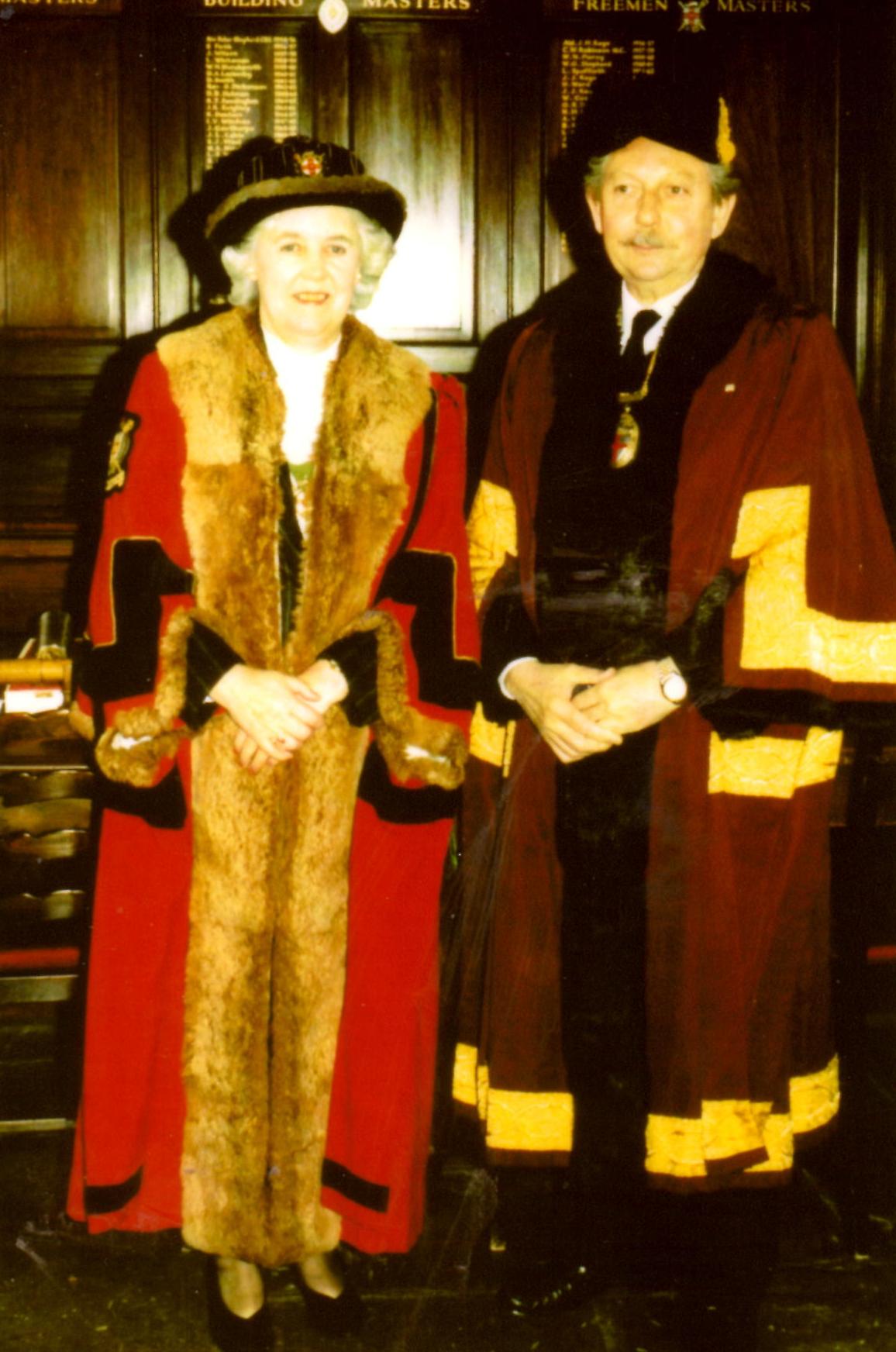 |
I was born in India in 1936. My father, and indeed to a large extent my mother, were working as Christian Missionaries for the Church Missionary Society in Hyderabad State. Dad felt the call to this during the Great War on the Western Front while in the trenches of the front line. The family returned home in 1939 when he became Rector of Christ Church, Didsbury, and we all lived in West Didsbury, South Manchester. After leaving school at 17, I continued at Manchester University and Didsbury College for teachers, before being called up for National Service. Having applied for almost all foreign postings, the army, in its infinite wisdom, sent me to the Royal Engineers in Ripon and Harrogate. On demobilisation I started a career in education teaching ages 11 to 18 in a variety of schools in the North West and South Wales. One of my fondest memories is teaching adults in Altrincham the art of wine-making. Many a Thursday evening saw a procession of very cheerful folk wending their ways homeward clutching demi-johns and a variety of bottles. As a result of years spent both professionally and vocationally in Altrincham, I became a founder member of the newly re-formed Altrincham Court Leet. Whilst serving the second of two terms as Provost (mayor in modern terms), I was invited by the President of the Freemen of England, Colonel John Kenyon, to join the Association. In FEW, under the tutelage and with the friendship of Colonel John and the Association Legal Counsel, Charles Sparrow, I served as Membership Secretary and then deputy President. After the election in 1996, I was privileged to be the FEW President until 1999. |
|
Whilst on the Executive Committee, my wife Anne and I (mostly Anne I must admit) designed the FEW robe. It was based upon the gowns worn at the Court of Hugh Lupus, Earl of Chester in 1070 sitting with his Barons and Abbots. The print was discovered in an antique book purchased at Bonhams in London. At first the robes for FEW Freemen were tailored by a small company, specialising in ceremonial regalia in Stockport. Two highlights stand out in my memories of years spent in the Association of FEW. Firstly, being invited to become a Freeman of London, and secondly, even more pleasurable, being invited to become an Honorary Member of the Gild of Freemen of the City of York. Both of these came as a result of working with Colonel John and Charles Sparrow on “The York Bill”, which successfully retained The Strays for the Freemen of York. As an elderly father, grandfather and very recently a great-grandfather, I enjoy learning about the activities of the Freemen of England and Wales and keeping in touch with old friends. Richard J. M. Bishop Past President; 1996 - 1999 June 2015 |
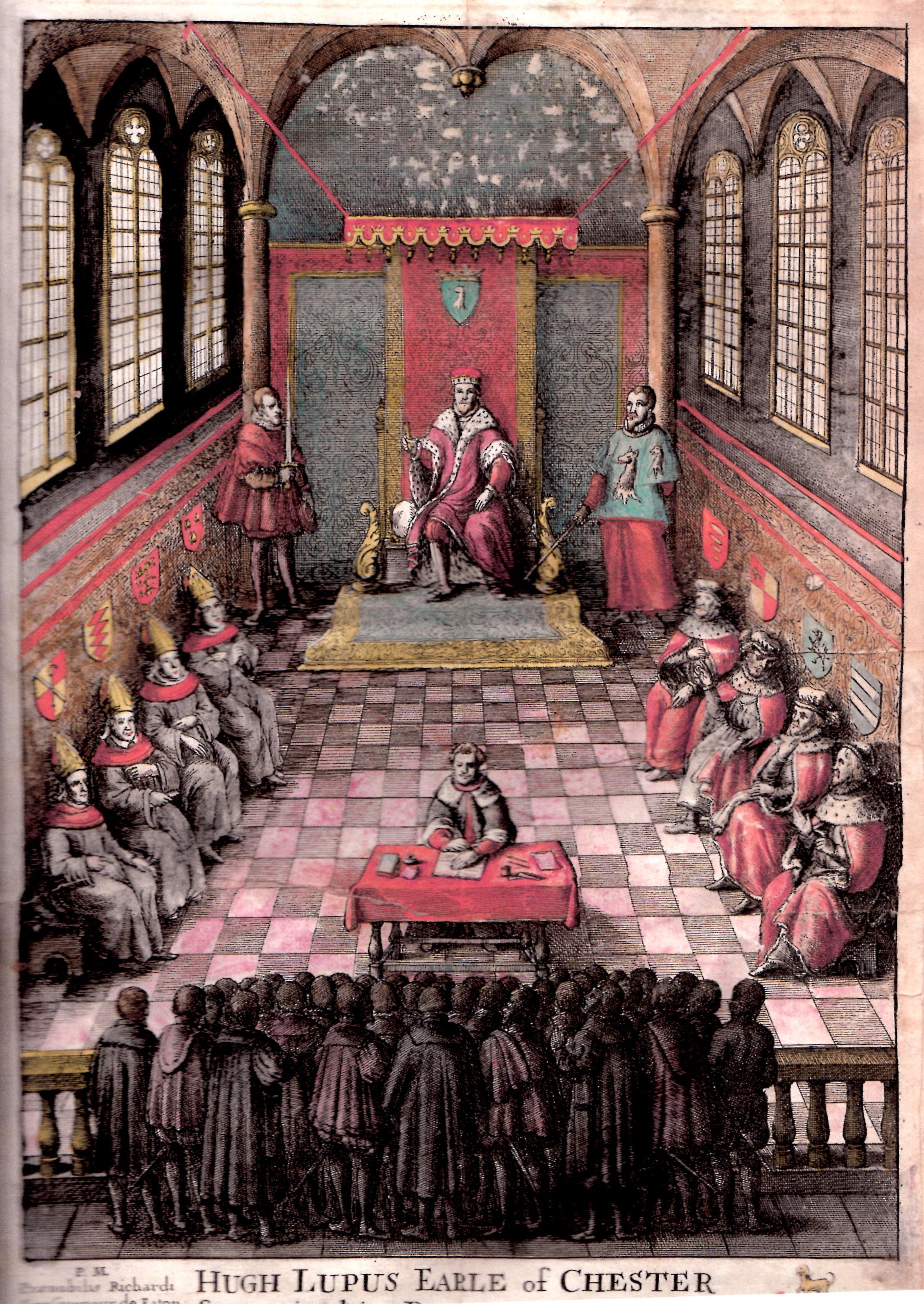 |
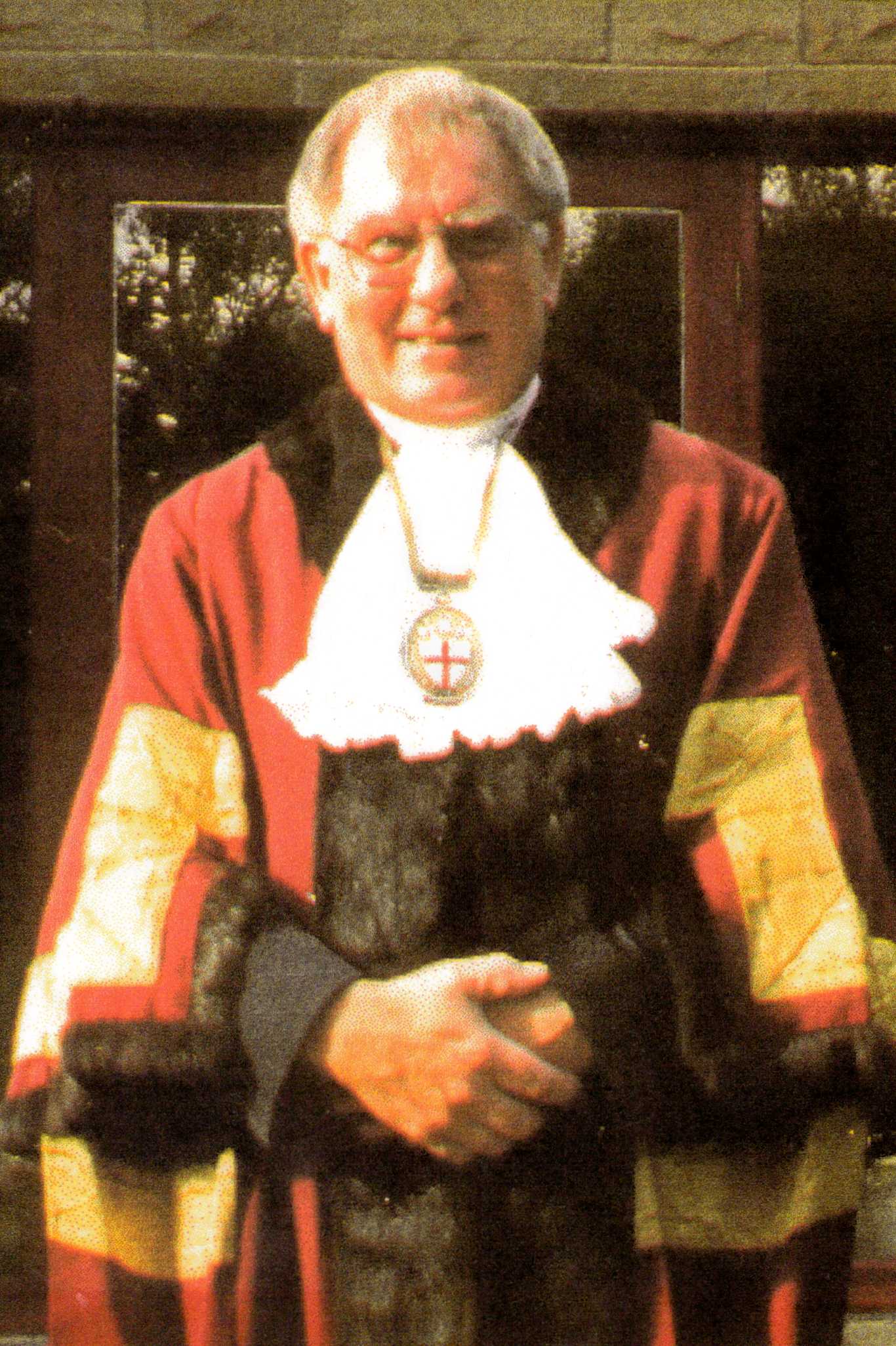 |
I was born a Geordie Sagittarian in 1933 and educated during the war in the school of a mining village overlooking the River Tyne.
On leaving school at fifteen I resisted a big financial temptation of the time to go down a coal mine, and instead served an engineering apprenticeship with a large engineering company on the infamous Scotswood Road. My academic achievements at night school were such that I was plucked out of my greasy overalls and propelled (complete with my slide rule) into the company’s Drawing Office - just prior to my National Service in the Royal Air Force.
At that point in time I had paperwork to prove that I had learned to pilot gliders and light aircraft. Thus the RAF, in their infinite wisdom deemed it prudent to train me as an Armourer (specialising in bombs) and to drop me into their Bomb Disposal Squadron. This cured my constipation and spawned my warped sense of humour.
When my RAF demob calendar was fully crossed out, I returned to my engineering employer. There I was identified by their senior management as a “high flyer” and progressed through various managerial rolls culminating in being made a Director in 1980 when I was headhunted back into the same company. During my time away in the 70s I was the UK Engineering Sales Agent for several French and German companies.
|
| Gwen', my loving wife for over 60 years, recently lost her protracted battle with stomach cancer and died peacefully at home. Gwen' would have told you that I was a workaholic and that she had to constantly chase me to and from my hobbies, which included compulsory gardening and involuntary DIY. Today, with three children, eight grandchildren and five great grandchildren, there is still plenty encouragement for my DIY skills and little time for my favourite pastime - long afternoon naps induced by the relentless TV adverts for funeral plans and monetary offers. | 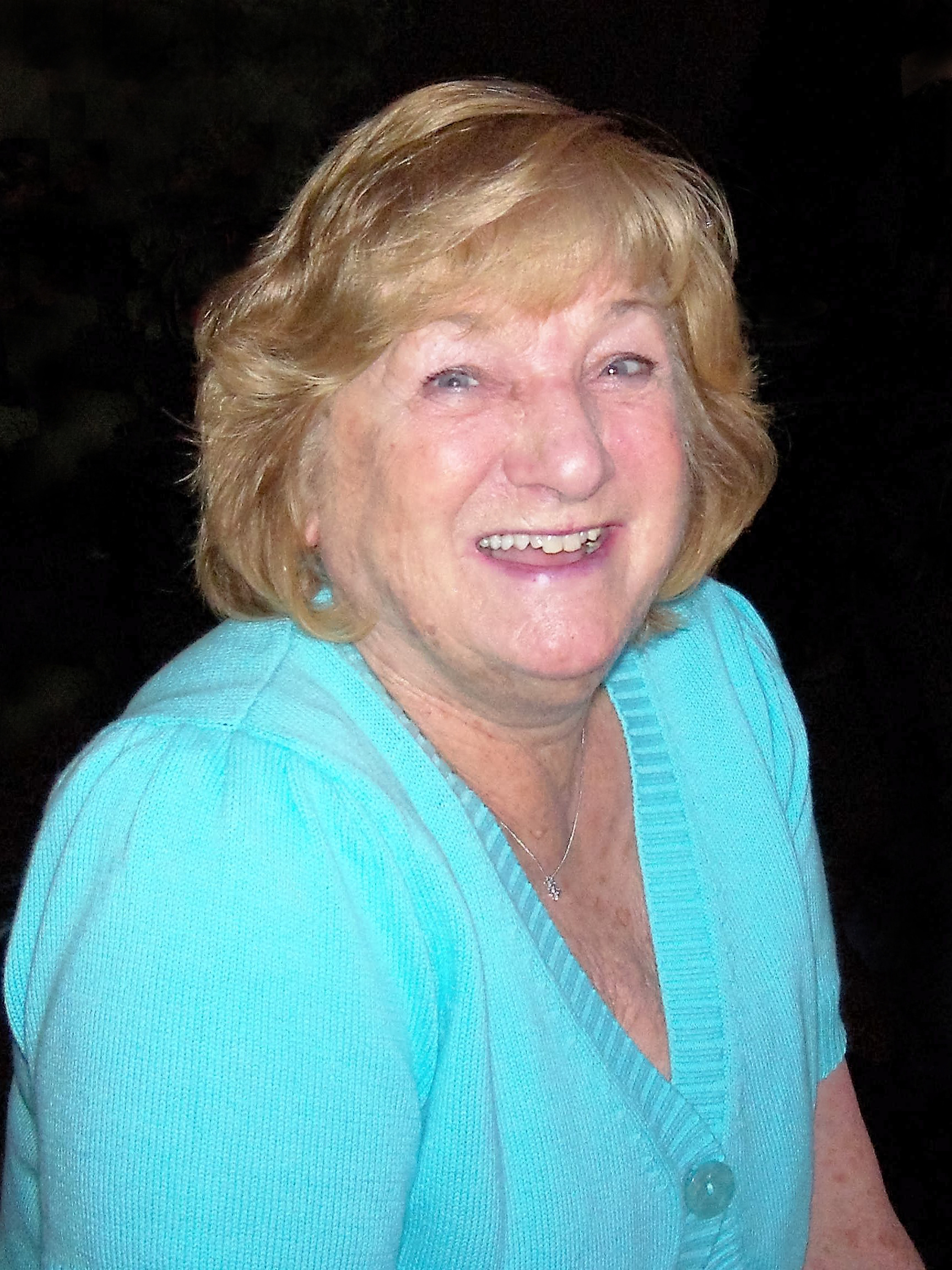 |
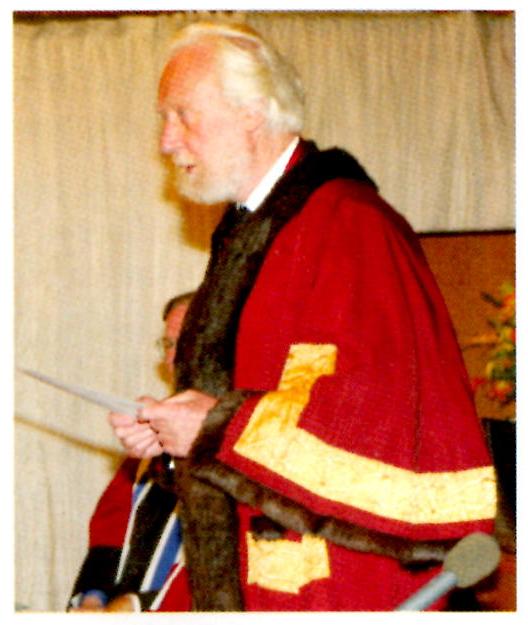 |
As the Journal (153) was going to print the sad news of Maurice’s death was received. Maurice, on taking the Presidency - he served 2002 to 2005 - made it clear that FEW had to become more responsive to the Guilds needs and more effective and relevant to the challenges to the Freedom which could extinguish it.
To this end he led the changes which reconstituted the relationship of the Executive, the Court and the AGM and ensured that more detailed communication with the membership was made by the introduction of a quarterly Journal and agitated for legislation to preserve and promote our interests.
Maurice Emmitt Pickering was born in Saxilby, near Lincoln, in 1927 and migrated to Coventry at an early age. From there, after schooling, he was involved in Civil Defence and later Commissioned into the Royal Warwickshire Regiment. After WWII he trained in Architecture at the Birmingham School and in Landscape Design at University College London. He set up his London based practice in 1959 and retained consultancy work, principally with the Ministry of Defence, until his last years. He married Mary in 1952 and they have two children and five grandchildren.
|
|
Maurice worked for many years for Harrow Nature Conservation Forum, a voluntary organisation which manages some six hundred hectares of London’s Green Belt, part of the Borough of Harrow. He was its Founder Chairman. This work was recognised when he was made the first Life Vice President of Harrow Heritage Trust in 2007.
His chief professional interest to the end was as Director of the internationally prestigious triennial Heidelberg Award for Environmental Excellence, which he organised for the Oberbűrgemeisterin der Stadt Heidelberg.
Maurice was vigorous until his final two years, when his mobility was restricted by motor neurone disease. However, he dedicated what energy he had to producing the sequel to Harry Ward’s book, which he had readied for proof reading prior to publication as Freemen in England and Wales. Let that be his memorial.
|
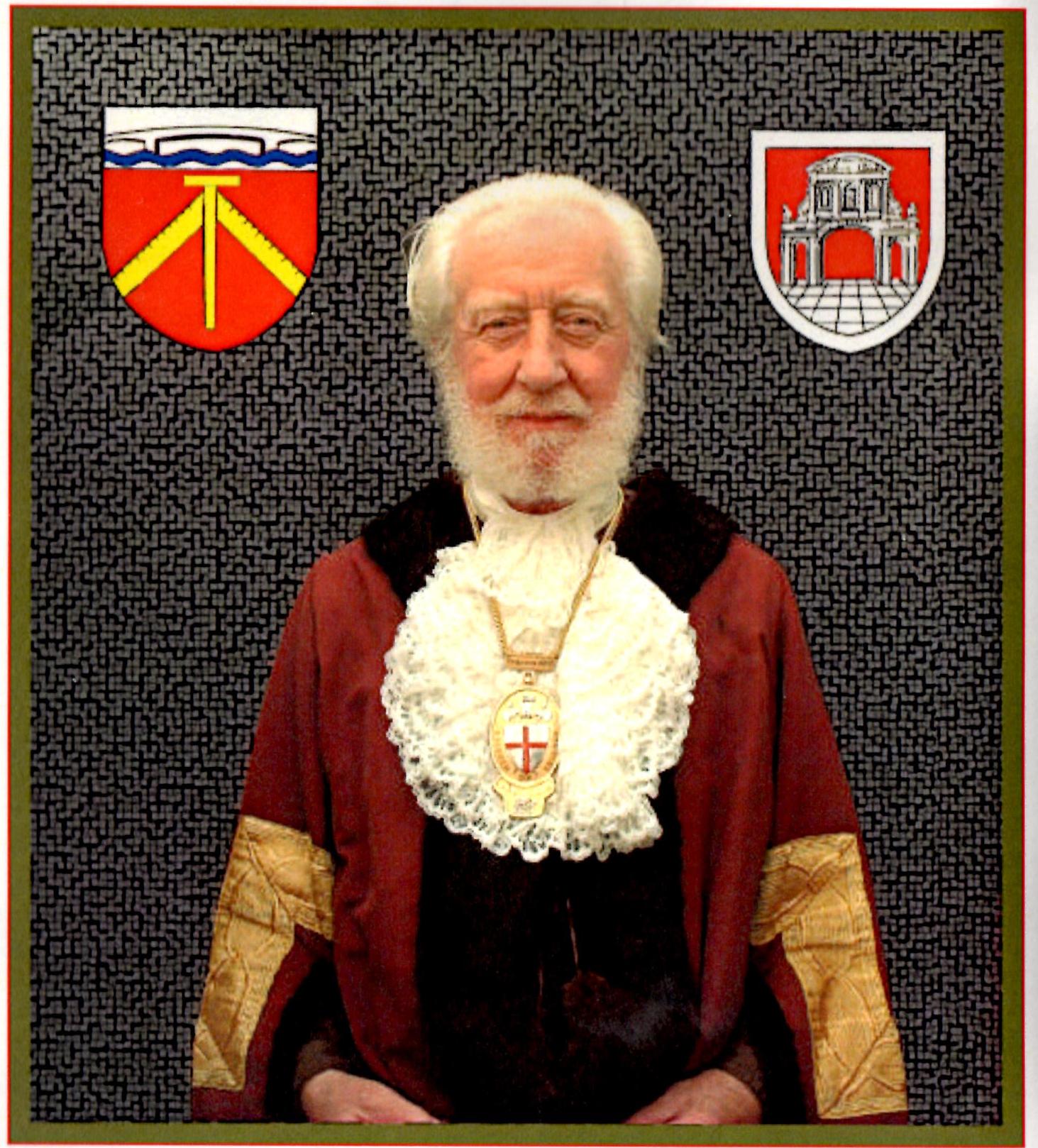 |
Philip Bowman, (1936 ~ 2009), in office 2005 to 2008 (deceased)
We do not have a biography for Philip so reproduce here the obituary which appeared in the York Press
Well-known Freeman of the City of York, Philip Bowman, dies aged 73
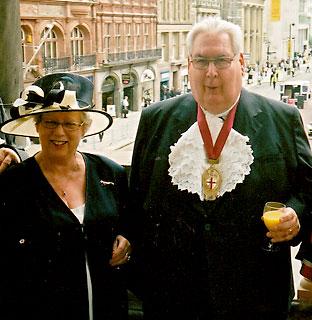 A FREEMAN of the City of York and retired taxi driver who will be remembered by hundreds of people for his outstanding after-dinner speeches has died, aged 73.
A FREEMAN of the City of York and retired taxi driver who will be remembered by hundreds of people for his outstanding after-dinner speeches has died, aged 73.
Philip Bowman, who lived in York until he moved to Stamford Bridge in 2005, leaves his wife of 46 years, Margaret, and their daughter, Philippa Millward.
Mr Bowman, who died on August 20th following a fall, worked for Station Taxis for 35 years – impressing tourists with his historical knowledge of York.
He became a Freeman of the City of York in 1989, by inheritance, and went on to become Master of the York Gild in 1998, working tirelessly to raise funds for Alne Hall Cheshire Home, the residential nursing home for disabled people in Alne, near Easingwold.
Mr Bowman, a former pupil of Bootham School, was elected as president of the Freemen of England and Wales in 2005 – a position he held until last year.
“He loved life and he loved meeting people and talking to them,” said Mrs Bowman, 71. “We literally travelled the length and breadth of the country visiting different guilds and he had an absolute gift for giving after-dinner speeches.
“He was well-respected across England and Wales and there were about 200 people at his funeral, many of who were Freemen who had come from all over the country”.
Upon leaving school, Mr Bowman studied bookkeeping at the former York Technical College and completed his National Service in Hendon and Rufforth before joining the family firm, James Bowman & Son – a removals company in Monkgate.
He fell in love with his wife after they were involved in a road accident together and the couple were married at St Andrew’s Church, Bishopthorpe, in 1963.
Mr Bowman represented the Monk ward of City of York Council as a Councillor in the late 1960s and early 1970s, and also dedicated many hours to producing plays for the Monkgate Players and the Guild of Scriveners.
Philippa, 45, said: “He lived life to the full and never looked on the dark side of life.
From the York Press, 8th September 2009
Colin Hardcastle, (1947 ~ 2019), in office 2008 to 2010 (deceased)
Colin has very kindly provided this biography:
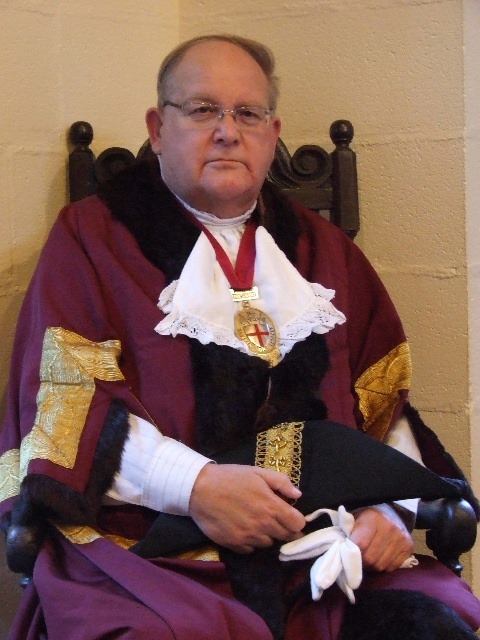 Colin was born in Leeds in 1947, the son of Leslie and Margaret.
Colin was born in Leeds in 1947, the son of Leslie and Margaret.
After completing junior school, he was enrolled at the City of Leeds Technical School in 1958, leaving in 1964 with the (then) usual 0 & A level GCEs.
On leaving school, he joined the Civil Service where he served with HM Court Service. Upon his retirement, in 2009, he was awarded the Imperial Service Order for "loyal and faithful Service to the Crown".
In 1972, he was made an accredited youth worker with the Methodist Church until his retirement in 2002, on his being made a Magistrate on the Juvenile Bench until 2009.
Colin was admitted into the York Gild of Freemen in 1984 and served on the Gild Court in a variety of 'posts' for nearly 30 years before retiring through increasing poor health.
He was admitted into FEW in 1989 and was made a Freeman of London in 1996.
In 1994, he was elected Master of the York Gild and was so again in 2007. He served as President of FEW from 2008 until 2010. He was subsequently appointed Warden of the North and a Custodian Trustee of FEW.
Sadly, both his parents are now deceased and he continues to live in Leeds, encouraging his brothers’ children and grand-children that 'The Freedom' is worth maintaining. Colin remains a Proud, and whenever possible, a dedicated and supportive Freeman.
“LONG MAY THE FREEDOM CONTINUE”
September 2017
Alan G Fallows, in office 2010 to 2013
Alan has very kindly provided this up-dated biography to that which appeared in a 2001 Journal:
Alan was born in 1951 in Shrewsbury, where his paternal family have held the Freedom since the eighteenth century with a varied list of trades such as bakers, tallow chandlers and innkeepers.
Educated at Shrewsbury Technical High School, and Shrewsbury Technical College, he progressed into engineering where he trained in accounting and procurement before becoming self-employed in 1982.
Taking up the Freedom in 1984 he was immediately co-opted into Shrewsbury Gild as Secretary, a post he held until 1997. Since that time he has held the positions of Deputy Master, Master and President several times each and acted as Steward from 2002 until 2013 when he finally decided to take a rest after 29 years of consecutive service.
Alan became an individual member of FEW in 1986 and after serving as Warden for the Marches from 1997 to 1999 was elected as Archivist in 1998 a position he has held continuously to date also taking the position of Deputy President in 2009 and holding the Presidency from 2010 to 2013.
As currently retiring President Alan has shown his commitment to protecting both the traditions of the Freedom and the status of FEW from the aspirations of outside influences and after a long period of instability carried out a constitutional reform to protect the Association in future.
During his Deputyship and Presidency Alan has steered the Association in its guidance to Gilds on the requirements of the Land Registration Act and after personally consulting with MP Derek Conway, Lord Graham of Edmonton and the Government Department of Communities was able to draft an enabling clause for inclusion in the Local Democracy, Economic development and Construction Act 2010 to facilitate both the admission of daughters of freemen to the freedom and give the ability to Gilds to self-determine their individual rules of admission thus providing the basis for the re-introduction of admission by apprenticeship.
September 2013
Gordon Varndell, in office 2013 to 2015
Ronald E. Leek, in office 2015 to 2017
Ron has very kindly provided this biography:
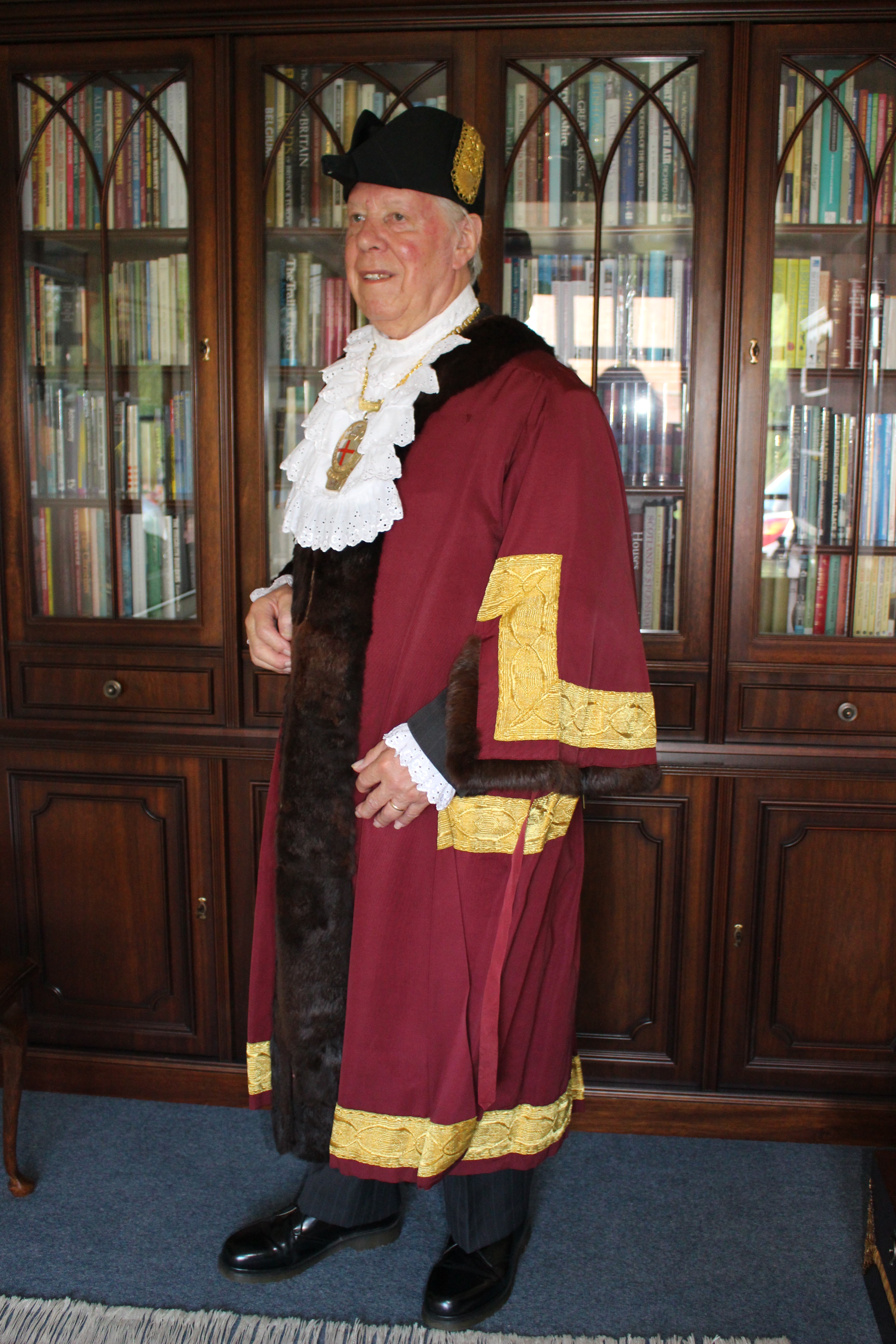 President of FEW from 2015-2017, Ronald (Ron) was born in 1935 in Solihull, Warwickshire. Married to Janet in 1956, he has two sons and three grandchildren. After completing his National Service in the army 1957-1959, where he was a Radio Relay Instructor in the Royal Signals at Catterick Camp, Yorkshire, he and Janet set up home together near Alcester in Warwickshire, where they have lived since 1961.
President of FEW from 2015-2017, Ronald (Ron) was born in 1935 in Solihull, Warwickshire. Married to Janet in 1956, he has two sons and three grandchildren. After completing his National Service in the army 1957-1959, where he was a Radio Relay Instructor in the Royal Signals at Catterick Camp, Yorkshire, he and Janet set up home together near Alcester in Warwickshire, where they have lived since 1961.
He was educated at Solihull School, before embarking on his career as a designer in the motor industry, working initially for major vehicle manufacturers, and later moving to the supply side of the industry, before his retirement in 2000.
He is a Freeman of the City of London, and a Bailiff of the Court Leet of Alcester. Over the years he has held various offices in the Alcester Court Leet, amongst which he was High Bailiff of Alcester 1969-1970, and Constable of the Court 1983-2004. He also became a member of the Guildable Manor of Southwark, where after progressing through each of its offices over a six year period, he became its Foreman (senior officer) 2009-2010. For many years he was a local Town Councillor in Alcester, becoming its Mayor 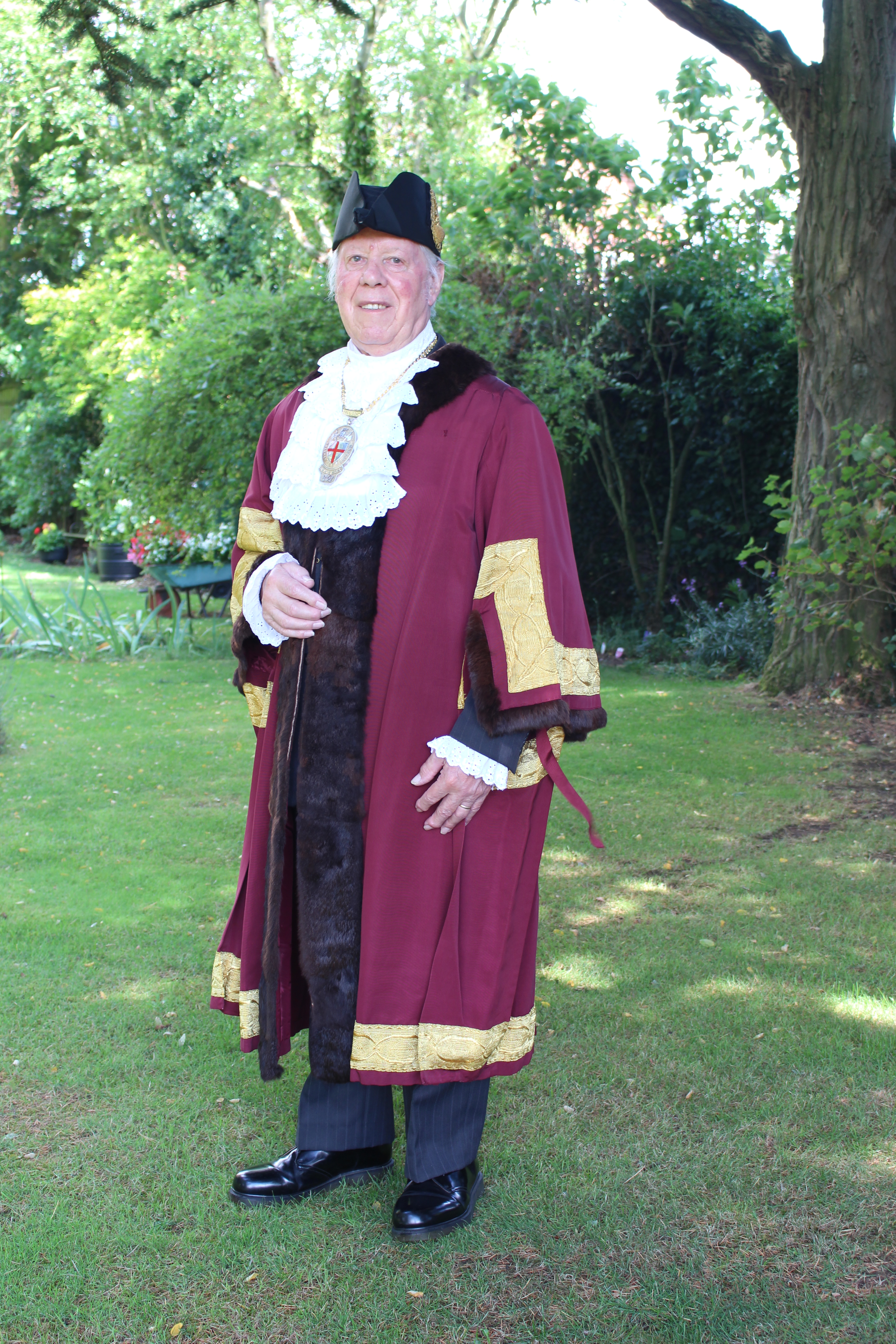 2002-2003. A founder member of the Alcester Civic Society in 1962, and its first secretary, he now continues as one of its committee members. He was active as a Sergeant in the Warwickshire Special Constabulary, and also ran the Alcester Scout Troop as its Leader for some twenty years, before moving on to become a Scout Association Adult Leader Trainer.
2002-2003. A founder member of the Alcester Civic Society in 1962, and its first secretary, he now continues as one of its committee members. He was active as a Sergeant in the Warwickshire Special Constabulary, and also ran the Alcester Scout Troop as its Leader for some twenty years, before moving on to become a Scout Association Adult Leader Trainer.
As a keen member of FEW, he was elected Hon Secretary in 1999, which post he held for the next 16 years, working closely alongside six other Presidents, before becoming President himself in 2015.
His interests include local and national heritage, photography, travel, touring in his motorhome, model railways, town twinning (Alcester is twinned with Vallet, France), Street Organs, and wine - where he is an active member of the English branches of two French wine fraternities, L’Ordre des Chevaliers Bretvins, and the Commanderie du Taste Saumur.
August 2019
JAMES EVANS, MBE, RD, MNM, in office 2017 to 2019
Jim has very kindly provided this biography
Jim’s family have been Freemen of Berwick for over 400 years. His father, Tom Evans, was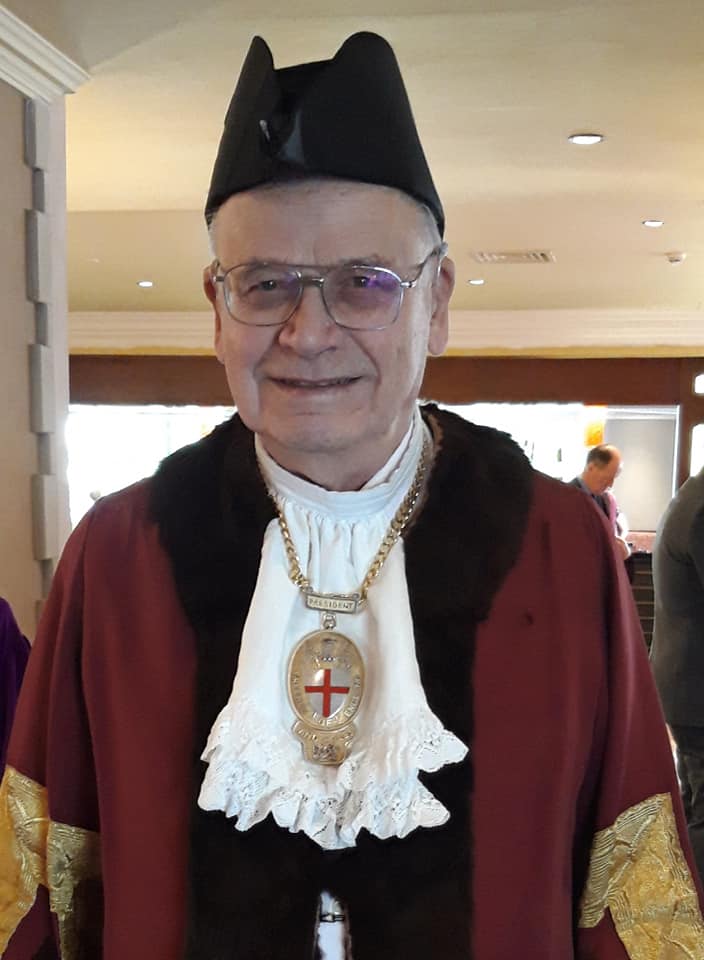 Chairman of the Berwick Guild for 40 years and would have chaired the meeting which founded the Freemen of England had he not died the month before. He had been a Sheriff, Mayor and Alderman of the Borough of Berwick-upon-Tweed. Jim is married to Pat. They have three children and a sister, all Freemen of Berwick, and five grandchildren, all waiting to become freemen.
Chairman of the Berwick Guild for 40 years and would have chaired the meeting which founded the Freemen of England had he not died the month before. He had been a Sheriff, Mayor and Alderman of the Borough of Berwick-upon-Tweed. Jim is married to Pat. They have three children and a sister, all Freemen of Berwick, and five grandchildren, all waiting to become freemen.
Educated at Merchiston Castle School, Edinburgh, and Durham (now Newcastle) University he graduated BSc in Naval Architecture. Having completed his apprenticeship he joined the Royal Navy for his National Service being commissioned as an Engineer Officer. He then joined the Yarrow Admiralty Research Department working on a number of new Royal Navy ship designs. He completed a post graduate course at Manchester University and Harwell Reactor School to qualify as a Nuclear Engineer before being seconded to the UK Atomic Energy Authority as Naval Liaison Officer on the UK Nuclear submarine project. When UKAEA created a department to design a UK submarine reactor he was head hunted to join this group. He was awarded the silver medal of the Nuclear Engineering Society for a paper on Pressurised Water Reactors. A change of Government resulted in the cancellation of the UKAEA Submarine project.
He took over the family boat building business where he designed and built 125 fishing boats and other vessels and trained 120 apprentices in the boatyard and at college some going on to senior management positions throughout the country. He was Chairman of the Fishing Boat Builders Association and represented the Federation on many National bodies. He then set up his own consultancy and was Safety and Training Officer of the Scottish Fishermen’s Federation. He was awarded the Merchant Navy Medal for his work on safety of fishing vessels. He remains President of the Anglo Scottish Fishermen’s Association.
He continued in the Royal Naval Reserve after National Service receiving the Reserve Decoration. His last appointment was as head of the Marine Engineering Department of the RNR and he retired with the rank of Captain and was Hon ADC to HM The Queen.
He was a Burgh, County and District Councillor, being Chairman of Berwickshire District Council for 16 years. He was a Deputy Lieutenant and JP for Berwickshire. He was awarded the MBE and also the Gold Cross of Merit of the Polish Republic.
He was Chairman of the Berwick Guild of Freemen for 40 years. In 1972 in the reform of local government Berwick ceased to be an administrative area and twice in the next few years the larger District Council attempted to acquire the Freemen’s Estate. After 20 years of dispute Jim was able to explain the position to the Councillors without the presence of officials. This included the result of the City of York’s bill over the York Strays which happened at this time. The Council withdrew all their threats against the Guild. In 2009 District Councils were abolished. A Berwick Town Council was formed in Berwick which was the natural successor of the original Berwick Borough Council. Relationships between Guild and Council have been good since that time. The Guild has now built up its own resources investing in housing and the stock market as well as supporting local charities. The Trust has also flourished and now gives very substantial sums to both Berwick Town Council and the Guild of Freemen Reserve Fund which provides grants within the original area of Berwick.
Berwick was an early member of the Court of Deans of Scotland and Jim has three times been Lord President. He has served as an elder of Eyemouth Parish Church for over 40 years. He has been Chairman / President of many local organisations including Round Table, Rotary, the local festival committee and some 20 other organisations, including the 125 Committee which commissioned the sculptures marking the 107 widows and 263 fatherless children “Widows and Bairns” left after the UK’s worst fishing disaster in 1881.
He has written a number of technical papers as well as giving many talks regarding the Freedom in Berwick and elsewhere. For 25 years he has worked on a new history of the Guild in Berwick, now occupying a large section of the memory of his computer. There is a problem that it may never be finished as more and more information comes to light.
He has been an individual member of FEW for 45 years and he and Pat have attended most AGMs. Berwick hosted the FEW AGM on four occasions while he was Chairman of the Berwick Guild. During York’s Gild of Freemen’s dispute with the City Council over the York Strays Berwick was able to provide substantial financial help to both York Gild of Freemen and FEW, which enabled the City of York Bill to be defeated with consequences for all Freemen. He was Chairman of the Custodian Trustees of FEW before joining the Executive, becoming President in 2017. During his term of Office he introduced the Host Pack for the guidance of Guilds Hosting the FEW AGM and Standing Orders for the Executive.
He is a firm believer that FEW is a necessary body to preserve the freedom for future generations. The Freedom shall again be threatened by legislation as it was in 1972 and individual Guilds such as happened with York and Berwick. There will inevitably be challenges in the future. It is essential that all Guilds work and hold together. A Freemen’s first responsibility is to their own Guild and each Guild must retain a deep knowledge of their history and the legislation upon which their Freedom is based. History has a habit of repeating itself. Thus, he has been a strong supporter of the Archive project and is the Guild representative on the Berwick Committee which has been supervising the cataloguing and digitising of the local archives which contain the Berwick Guild records up to 1835. Those after that date are held by the Guild. Details, including legal opinions, of the Berwick dispute are recorded in the FEW archives.
October 2022
